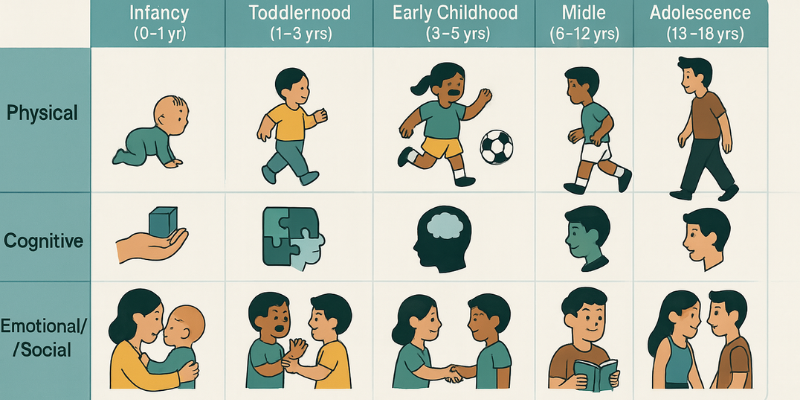Understanding individual behaviour is a cornerstone of Organisational Behaviour (OB) study. As explained by Robbins and Judge (2021), individual behaviour within the workplace encompasses a range of psychological and behavioural facets, including attitudes, personality traits, motivation, perception, learning, and decision-making processes. These elements collectively shape how employees interact, perform, and adapt within an organisational context. For managers, leveraging insights from OB is pivotal in predicting and enhancing employee performance and job satisfaction (Gibson et al., 2011).
Attitudes and Job Satisfaction
Attitudes reflect how employees feel about various aspects of their work environment, including their job roles, colleagues, and organisational policies. Positive attitudes often correlate with higher job satisfaction, which in turn can enhance productivity and reduce turnover (Luthans, 2011). Managers can influence attitudes through recognition programmes, fostering a supportive work culture, and ensuring open communication channels. For instance, regular feedback and opportunities for professional growth can significantly boost an employee’s sense of value and belonging within the organisation (McShane & Von Glinow, 2018).
Personality Traits and Workplace Dynamics
Personality traits, such as extroversion, conscientiousness, and emotional stability, play a crucial role in determining how individuals behave in the workplace. Robbins and Judge (2021) highlight the importance of understanding these traits to predict employee behaviour. For example, individuals high in conscientiousness are typically reliable and detail-oriented, making them ideal for roles requiring precision and accountability. Managers can utilise personality assessments during the hiring process to ensure a good fit between the job requirements and the candidate’s personality traits, thus promoting a more harmonious and productive work environment (Pinder, 2014).
Motivation and Performance
Motivation is a key driver of employee performance. Theories of motivation, such as Maslow’s Hierarchy of Needs and Herzberg’s Two-Factor Theory, provide frameworks for understanding what motivates individuals (Verywell Mind, 2024; MindTools, 2024). According to Robbins and Judge (2021), effective managers recognise that motivation is not one-size-fits-all; it varies based on individual needs and circumstances. By offering tailored incentives, such as performance bonuses, career development opportunities, and work-life balance initiatives, managers can effectively inspire their teams. Additionally, fostering intrinsic motivation through meaningful work and a sense of accomplishment can lead to sustained employee engagement and superior performance (Rynes, Gerhart, & Minette, 2004).
Perception and Organisational Justice
Perception refers to how employees interpret and make sense of their environment. It influences their attitudes, motivation, and behaviour. Managers must be aware of the factors that shape employee perceptions, such as past experiences, cultural background, and personal biases (Schneider & Barbera, 2014). Ensuring transparency and fairness in decision-making processes can enhance perceptions of organisational justice. For example, clear communication about promotion criteria and equitable treatment of all employees can foster trust and loyalty within the workforce (Society for Human Resource Management, 2021).
Learning and Adaptability
Learning in the workplace involves acquiring new skills and knowledge, which is essential for both individual and organisational growth. Robbins and Judge (2021) emphasise the role of continuous learning in adapting to changing environments and technological advancements. Managers can facilitate learning by providing access to training programmes, encouraging mentorship relationships, and fostering a culture of continuous improvement (Salas et al., 2012). An environment that values learning not only enhances employee competencies but also promotes innovation and adaptability within the organisation (Luthans, 2011).
Decision-Making Processes
Decision-making is a critical aspect of individual behaviour that affects organisational outcomes. Employees at all levels are involved in decision-making processes, from routine operational decisions to strategic planning. Robbins and Judge (2021) underscore the importance of understanding cognitive biases and heuristics that influence decision-making. Managers can enhance decision-making quality by promoting a collaborative approach, encouraging diverse perspectives, and providing adequate information and resources. Decision-making training and workshops can also help employees develop better analytical and problem-solving skills (Gibson et al., 2011).
Understanding individual behaviour within the context of Organisational Behaviour is essential for managers aiming to predict and influence employee performance and job satisfaction. By recognising and addressing the multifaceted aspects of attitudes, personality traits, motivation, perception, learning, and decision-making processes, managers can create a work environment that fosters positive behaviour and high performance. Insights from OB not only enhance managerial effectiveness but also contribute to the overall success and sustainability of the organisation. As Robbins and Judge (2021) suggest, the ability to understand and manage individual behaviour is a critical skill for any leader in today’s dynamic and competitive business landscape.
References
Gibson, J. L., Ivancevich, J. M., Donnelly, J. H., & Konopaske, R. (2011) Organizations: Behaviour, Structure, Processes. 14th ed. McGraw-Hill Education.
Luthans, F. (2011) Organizational Behaviour: An Evidence-Based Approach. 12th ed. McGraw-Hill Education.
McShane, S. L., & Von Glinow, M. A. (2018) Organizational Behaviour: Emerging Knowledge, Global Reality. 8th ed. McGraw-Hill Education.
MindTools. (2024) “Herzberg’s Motivators and Hygiene Factors”. [Online]. Available at: https://www.mindtools.com/pages/article/herzberg-motivators-hygiene-factors.htm. [Accessed on 14 June 2024].
Pinder, C. C. (2014) Work Motivation in Organizational Behaviour. 2nd ed. Psychology Press.
Robbins, S. P., & Judge, T. A. (2021) Organizational Behaviour. 18th ed. Pearson Education.
Rynes, S. L., Gerhart, B., & Minette, K. A. (2004) “The Importance of Pay in Employee Motivation: Discrepancies between What People Say and What They Do”. Human Resource Management. 43(4), pp. 381-394.
Salas, E., Tannenbaum, S. I., Kraiger, K., & Smith-Jentsch, K. A. (2012) “The Science of Training and Development in Organizations: What Matters in Practice”. Psychological Science in the Public Interest. 13(2), pp. 74-101.
Schneider, B., & Barbera, K. M. (Eds.) (2014) The Oxford Handbook of Organizational Climate and Culture. Oxford University Press.
Society for Human Resource Management (2021) “Employee Job Satisfaction and Engagement: Revitalizing a Changing Workforce”. [Online]. Available at: https://www.shrm.org/hr-today/trends-and-forecasting/research-and-surveys/pages/job-satisfaction-and-engagement-report-revitalizing-changing-workforce.aspx. [Accessed on 14 June 2024].
Verywell Mind (2024) “Maslow’s Hierarchy of Needs: A Guide to Understanding Your Needs and How They Affect Your Behaviour”. [Online]. Available at: https://www.verywellmind.com/what-is-maslows-hierarchy-of-needs-4136760. [Accessed on 14 June 2024].













